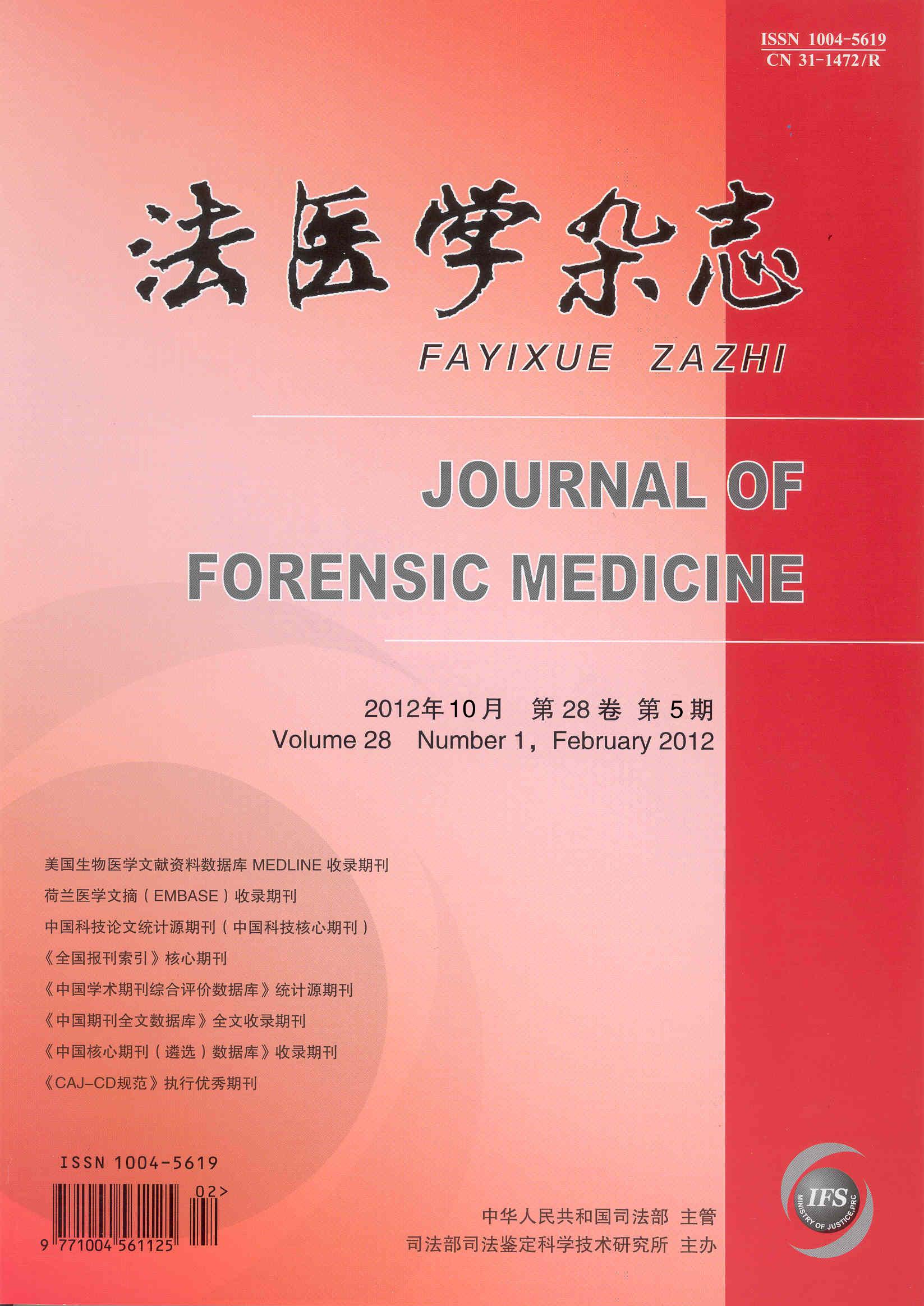|
|
Early Expression of Hypoxia-Inducible Factor-1 alpha after Acute Myocardial Ischemia in Rats
DU ZHONG-BO, MAO RUI-MING, GAO WEI-MIN, ET AL.
2012, 28(5):
327-332.
DOI: 10.3969/j.issn.1004-5619.2012.05.002
Objective To observe the changes of hypoxia-inducible factor-1 alpha(HIF-1α), the expression in the early stage (within 6 h) of acute myocardial ischemia and to explore the potential forensic application. Methods SD rats were randomly divided into one control group, one sham operation group and five myocardial ischemia groups which received ligation of the left anterior descending(LAD) coronary artery. The five experiment groups divided into 15 min, 30 min, 1 h, 3 h and 6 h after LAD ligation. The expression of HIF-1α was detected by immunohistochemistry, immunofluorescence and Western blotting, respectively. Results Both the control group and sham operation group showed no expression of HIF-1α, whereas the expression of HIF-1α could be weakly detected beneath the endocardium at 15 min after LAD ligation. With the increase of myocardial ischemia process, the positive staining gradually extended from endocardium to epicardium, reached the peak at 3 h, and began to decrease gradually at 6 h after LAD ligation but still maintained at a relatively high level. In addition, the expression of HIF-1α without a time-dependent way was also detected in full thickness of the right ventricle in occurrence of ventricular arrhythmia after LAD ligation. Conclusion HIF-1α may be regarded as a sensitive marker for sudden cardiac death induced by early acute myocardial ischemia, and may also be helpful for the diagnosis of fatal arrhythmia.
Related Articles |
Metrics
|


